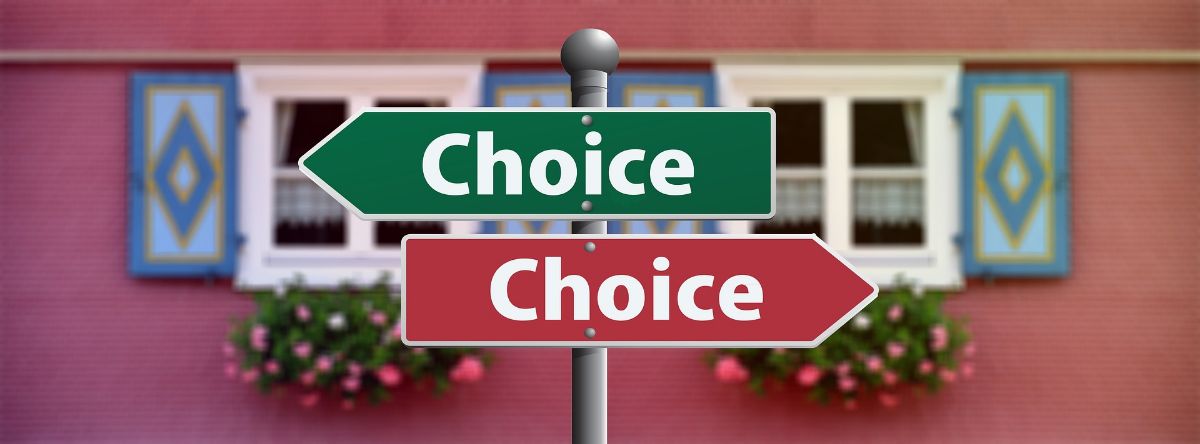
One of the basic concepts of economics that you should control is the opportunity cost. It is a metric that helps people and companies to evaluate what the consequences of a choice may be, hence it is so important, not only economically, but also financially, in macroeconomics ...
But What is the opportunity cost? Which functions has? There is a lot of types? If you want to know everything, keep reading and you will find out.
What is the opportunity cost
The opportunity cost, too known as opportunity cost or alternative cost it is a cost, be it fictitious or imaginary, that is not made in order to make an investment in something else that is more urgent or a priority.
In other words, we are talking about a series of resources that are not received because we resigned in favor of another decision. An example could be having two decisions, and you can only decide on one. The opportunity cost, or value of the best unrealized option, would be the one that you would not choose. Something like choosing between buying a Coca-Cola and a bottle of water; No matter what you decide, there will always be an opportunity cost in that product that you do not decide to buy.
El The creator of this term was the economist Friedrich von Wiser, who, in his Theory of the Social Economy (in 1914) defined it as what is renounced when making a decision. For him, there is only one option that makes sense, while the others must be discarded, hence this term.
And it is that, apart from the applications in economics, finance ..., this term can also be used on a personal level.
Opportunity cost types

Because any option that is made between the different decisions to be carried out entails costs, the opportunity cost is said to be of two different types:
Increasing opportunity cost
Refers to those expenses that will arise when the resources, or the options available, are not homogeneousIn other words, they cannot be balanced or made as objective as possible between equals.
In this case, those resources become inefficient and are not productive. For example, manufacturing a product using other types of resources that do not have the same quality as the originals, in such a way that sales drop and the resources begin to not be used because there is no demand for them.
Constant opportunity cost
They are called Ricardian costs and are given when the production resources are replaced by others without affecting the product itself, because they are of equal quality.
We give you the same example as before, the one that you are manufacturing a product and decide to change some resources or parts of those elements for others that have the same quality but that bring you more benefits. In this case, as it does not affect quality or production, it is said that it would be an acceptable cost.
Why is opportunity cost so important?

If you think about it every time you have to make a decision, you lose the others you leave behind, but, with them, also the gains that you would have gained, in this case already losses. In other words, any decision you make about several brings positive and negative consequences. And although this is a cheaper term, the truth is that we can apply it on a day-to-day basis.
With opportunity costs you can have a idea of what is the profit lost by having given up that idea over another. And what can it do for us? At the business level, to make comparisons, sometimes before making the choice, in order to make the most appropriate option. That is, they do not get carried away by the one they like the most or the one that is more profitable at first glance, but rather the benefits and consequences of both are valued to decide.
Now, in the vast majority of these cases, the cost would not be a real value because there are many other factors that come into play. But most of the time the final choice is made by the one that has the greatest benefit for the company.
What is opportunity cost in finance
While it may already be clear to you what opportunity cost is, it is possible that, when it comes to finances, it may change a bit. And it is that in this case it refers to the profitability of an investment when the accepted risk is considered. For example, if you decide to invest your money in two projects (A and B), either of them can give you a series of benefits. Once it is taken, The cost of having made the other decisions and what has been obtained with the chosen one must be analyzed x time to know if a good choice has been made.
Let's see it with a more practical example. Imagine that you have the option of investing in shares of a company or starting a clothing business. Finally, you go for the clothes and you assemble and work on it. However, after a year, it turns out that you have not made any profit; that is, you have a profitability of 0.
The opportunity cost would then analyze how much the company's shares are at that moment in such a way that, if they give a positive value, and greater than 0, it will mean that you have suffered an opportunity loss, since you did not choose that option . On the contrary, if they were negative, it would be clear that the store has been a good option, even if it has not reported anything to us.
How it is calculated

If right now you are wondering how the opportunity cost is calculated, we can leave you an equation that will come in handy at an illustrative level to really understand it.
This is:
Opportunity cost = Value of the option that you do not take - Value of the option that you do take.
In other words, it is the difference between what you would have achieved with an option that you discarded and the one that you have actually taken.
In this case values can be:
- Older than 0. That means that the decision you did not make was a better choice than the one you did make.
- 0. That is, both one option and the other were the same (or could obtain the same, since you play with a cost that is fictitious, the one you do not take).
- Less than 0. That is, when that subtraction comes out in the negative, it will indicate that the option you took was the appropriate one and that it has made you win.
Is it now clearer to you what the opportunity cost is? You have doubts? Well, do not think about it and ask us.